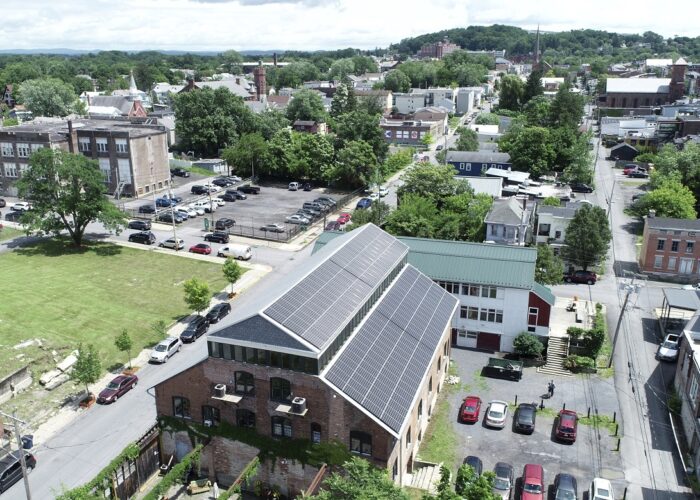Virtual power plants can play a big role in dispelling the need for polluting peaker plants, but their effectiveness and scalability are dependent on consumer engagement, writes Sean Rai-Roche

The solar industry knows better than most the problems associated with peaker plants. Given the nature and timing of solar power generation, the use of peaker plants is antithetical to the industry’s objective of reducing carbon emissions. But the solar industry may have found its response to the peaker dilemma in virtual power plants (VPP). These digitised systems, through cooperation with their customers, can dampen electricity use at peak hours, reducing the need for peaker plants and, with enough adoption at scale, render them obsolete.
OhmConnect is a provider of one such system. The California-based company alerts its 500,000 customers during times of peak energy demand in the state, asking them to reduce their usage and avoid the need for peaker plants to be deployed to meet demand. In return its customers get rewards and incentives, while the company gets paid at wholesale energy prices for power it has saved, just as a utility company would for providing power.
Try Premium for just $1
- Full premium access for the first month at only $1
- Converts to an annual rate after 30 days unless cancelled
- Cancel anytime during the trial period
Premium Benefits
- Expert industry analysis and interviews
- Digital access to PV Tech Power journal
- Exclusive event discounts
Or get the full Premium subscription right away
Or continue reading this article for free
This is done on a postal code by postal code basis, but “if you start to zoom out you see these fleets of VPPs sprinkled across California that are responding to grid conditions, flexing energy usage in response to real time feedback,” says Curtis Tongue, OhmConnect co-founder and CSO.
Tongue sees solar power and VPPs like OhmConnect as symbiotic given the intermittent nature of the energy source. “The cost of deploying solar has plummeted about 80% since 2010 and the grid has built out hundreds of additional GWs of solar over the past decade,” he says. “But it will need better and more reliable ways to handle intermittency” if it is to continue its meteoric rise as a clean energy option.
“So while OhmConnect supports individual net metered customers participating in our program, our more meaningful contribution to solar is paving the path for a grid in which solar is the star of the show,” he explains.
In recent years, major players in the solar industry have looked at VPPs as a way to stabilise electricity demand and support decarbonisation efforts. Last year, Sunrun aggregated 300 domestic solar-plus-storage installations into a single virtual power plant (VPP), while Tesla is currently developing a 50,000 home VPP in South Australia. Similarly, Enphase Energy has said customers of its battery storage solution in certain US states would be able to earn up to US$1,500 per year by allowing grid utilities to access their capacity. These examples serve to highlight to attention now being paid to how grid stability and demand response operate alongside solar systems.
When it comes to OhmConnect, homes with a smart meter, which is around 85-90% in California, are able to engage with its ‘Resi Station’, or VPP, with the company then giving them rewards for reducing their energy use. As consumers get rewards – which can come as cash, prizes or even smart devices for their home – for their usage reductions, participation grows as they recognise the benefit, resulting in a “virtuous cycle”, says Tongue. Consistent performers who reduce their power demand during every event are then able to earn additional awards and status in a gamification exercise that taps into consumer behaviour. This approach has resulted in OhmConnect’s opt-out rate during demand events being below 1%.
A focus on consumer behaviour has served the company well. From 2020 to 2021, California issued 11 ‘Flex Alerts’ that encouraged consumers to reduce their power use. But in response to alerts on 9 and 10 July cause by a massive heatwave in the state, consumers didn’t drop their electricity demand at all, prompting fears of “flex alert fatigue”. Meanwhile, “OhmConnect customers have shown willingness to repeatedly and substantially reduce their energy use in response to Flex Alerts, even during extended heat waves,” said the company.
And the power savings involved can be substantial. While day to day savings may not be eyewatering, the technology really comes into its own during extreme events. For example, during the 8 – 12 July heatwave, OhmConnect customers delivered 240MWh in savings to California ISO (CAISO), company data shows. Similarly, during the 15 – 18 June heatwaves, they saved 140MWh – the equivalent of taking 150,000 US homes off the grid for an hour.

What’s next?
Initially launched as a start-up, most of OhmConnect’s funding came from venture capital and small-scale investors. Now, however, it increasingly operates as a utility company, getting income from its participation on wholesale markets through energy and capacity contracts signed with utilities.
“There is a tremendous amount of unlocked market opportunity with flexible load systems,” says Tongue. The ideal partner, according to him, is one that can see the value in unlocking the potential found in technologies such as smart home appliances, electric vehicles and the plethora of new technologies making their way into our homes that can help measure and drive down electricity demand.
The company is open to both US and international partnership opportunities and already has one partnership arrangement in Australia with national utility Origin, which Tongue says has been very successful. At the end of last year, OhmConnect also received a US$100 million investment from Google-affiliated Sidewalk Infrastructure Partners, which Tongue says “shares its common vision”.
Moving forward, OhmConnect certainly “has an eye on Texas” as its next target in the US. Tongue says that recent climate stresses in the state, such as extreme cold snaps and heat waves, have made consumers there more conscious about the climate and their energy consumption. Texas has also recently been a front runner in the US’ solar push, installing three times more solar than any other US state in the first quarter of 2021.
With countries around the world looking to reduce their emissions, every possible approach is important. Intensive, polluting and ultimately unnecessary peaker plants must become a thing of the past and VPPs like OhmConnect can help facilitate their extinction. It requires savvy design, smart homes and a focus on consumer engagement but successes in California have shown it is possible. The challenge will be scaling VPPs to the national level.





